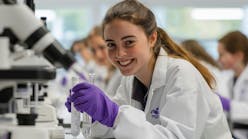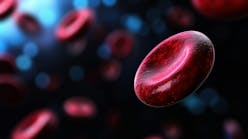Time is our most precious resource in the clinical microbiology laboratory. As resistant and multidrug-resistant organisms (MDROs) spread and evolve, our clinical colleagues turn to us in the microbiology laboratory to deliver rapid test results so that they can appropriately treat a patient with infection. The Grady Health System in Atlanta recently acquired a cutting-edge piece of research technology that could potentially give pathogen identification and antimicrobial susceptibility (AMS) data to our physicians more quickly than previously possible.
According to the Alliance for the Prudent Use of Antibiotics (APUA), healthcare-associated or community-acquired infections with MDROs have been rising steadily. However, we could control this problem and begin to reverse it by judiciously using antibiotics. To do this, the microbiology lab must be able to decrease the turn-around-times (TAT) of positive culture results, along with finding ways to bring about faster TAT of susceptibility AMS results so clinicians can treat the pathogens effectively with the right drugs.
The Grady Health System in Atlanta is licensed for 953 beds and is the largest health system in the state. We have more than 600,000 patient visits annually, pulling patients from six neighborhood health centers, a stand-alone HIV/AIDS clinic, and 53 specialties. Medicaid and uninsured patients make up the largest percentage of all patients. As a result, the Grady microbiology laboratory has been dealing with a variety of infections including many public health-related infections. For example, the lab handles a large number of mycobacterial cultures. The lab staff includes 30 FTEs and three shifts, providing year-round 24/7 service.
Physicians in the U.S., particularly when dealing with very sick patients in the emergency department (ED) or intensive care unit (ICU), in many cases use empiric antibiotics because they simply cannot wait a day or two or three to determine what is causing an infection. This “better-safe-than-sorry” approach saves lives and is often the only viable option, but it also leads to the misuse of antimicrobial drugs and an increase in resistance. For this reason, the World Health Organization (WHO) designated “Antimicrobial Resistance: no action today, no cure tomorrow” as the theme for World Health Day on April 7, 2011.
Early this year, we began to evaluate a technology called Matrix Assisted Laser Desorption Ionization Time of Flight Mass Spectrometry (MALDI-TOF MS), which holds the potential to help bypass some of the most time-consuming chores involved in pathogen culturing: identification and susceptibility testing. Like all MS platforms, MALDI-TOF MS allows for the identification of the unique protein signature of infectious pathogens, whether they are bacterial, mycobacterial or fungal. The approach has also been used to identify cancer biomarkers. The data provided are quite specific. MALDI-TOF MS provides very unique molecular signatures of a tested pathogen taken from an isolated colony. This technology involves the ionization of a sample and the application of an electric field to separate the proteins by mass. The resulting spectral signature is very specific to the pathogen tested and quickly reveals what pathogen is causing the illness.
The process can take as little as a few minutes, giving us what we need most: time. The technology is not cleared yet by the FDA for clinical use, but our research indicates that MALDI-TOF MS holds great potential to improve patient care. For example, if we identify a Gram-positive organism, we could use MALDI-TOF MS to bypass a 24-hour culturing process and quickly determine the exact pathogen. This gives doctors critical information on which antibiotic to select for treatment. From start to finish, this could eliminate 24 to 48 hours from the process currently being used in every microbiology lab in the country.
Aside from pathogen identification, MALDI-TOF MS could potentially reduce susceptibility testing time dramatically. The faster we can identify the pathogen, the faster we can put it on appropriate AMS platforms such as the VITEK2 system with the appropriate susceptibility card. Another promise for this technology is faster and more accurate treatment of multi-drug resistant organisms (MDROs). For example, fluconazole-resistant Candida albicans is a life-threatening fungal infection that poses a serious risk to HIV/AIDS and other immunocompromised patients such as those undergoing cancer treatments. It currently takes two to three days to diagnose Candida albicans. Once the diagnosis is made, fluconazole treatment is typically initiated. Not only could MALDI-TOF MS reduce this process from days to hours, but the antifungal susceptibility test can give clinicians and the microlab a way of quickly learning that the strain is resistant to fluconazole and other members of the Triazole anti-fungal family of drugs, allowing them to go directly to micafungin or other Echinocandin anti-fungal drugs that work by an entirely different mechanism of action that is effective against the fluconazole-resistant fungus. MALDI-TOF MS allows this because the lab can quickly put a known case of this fungal infection on a Minimum Inhibitory Concentration (MIC) platform, such as Etest, or Sensititre, to directly determine what family of antifungals is most effective against the isolated strain.
MALDI-TOF MS is still being evaluated, but it holds great promise in helping the microbiology lab provide clinicians and the pharmacy with the information they need to match the right patient with the right medication in record-setting time.
Yun F (Wayne) Wang, MD, has been Director of Clinical Microbiology, Immunology and Molecular Diagnostics at Grady Health System since 2000. He is also associate professor of pathology & laboratory medicine at Emory University School of Medicine. Dr. Wang was the division chair and currently serves as division councilor for the Clinical and Molecular Immunology Division of the American Society for Microbiology (ASM).





